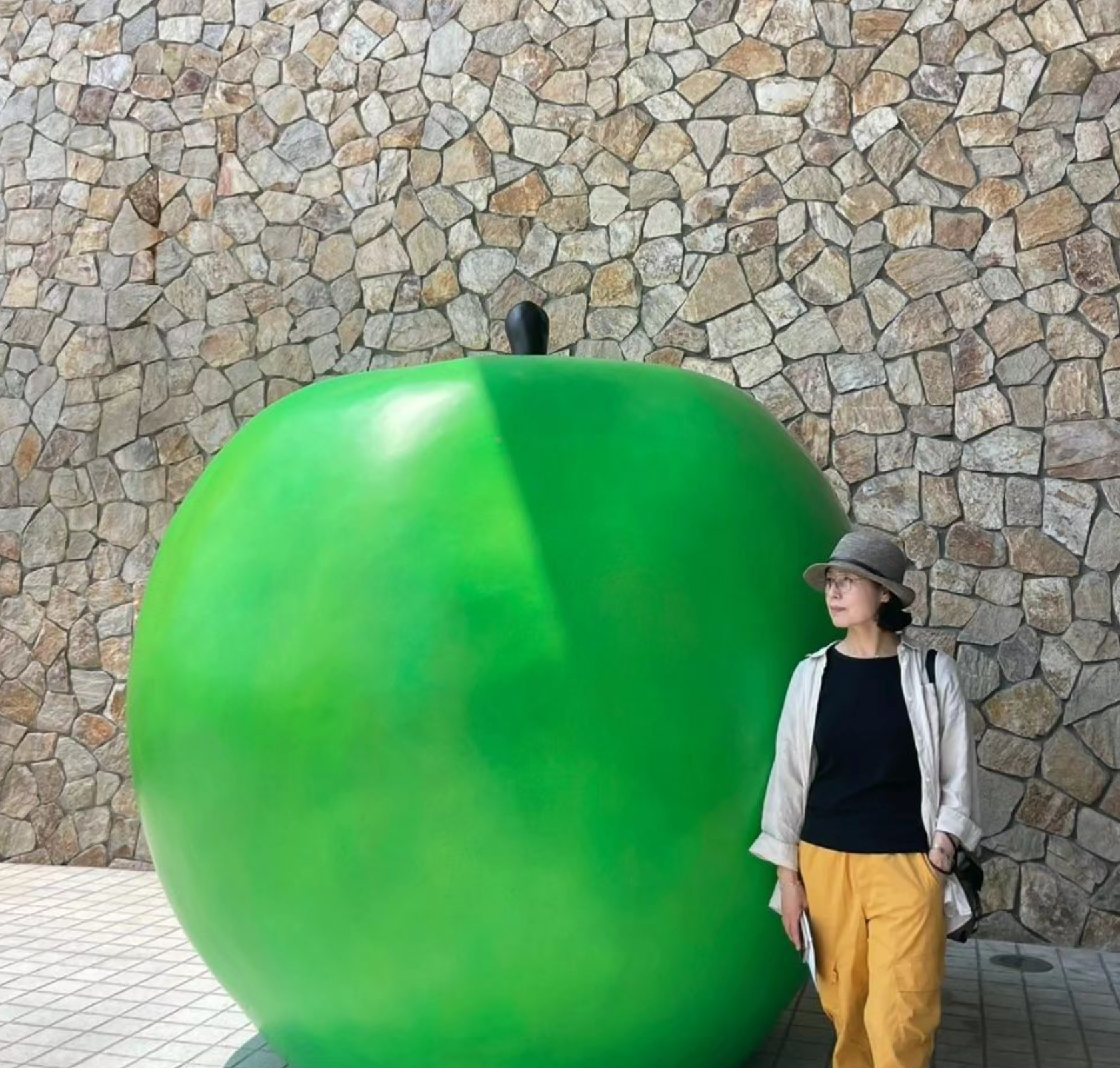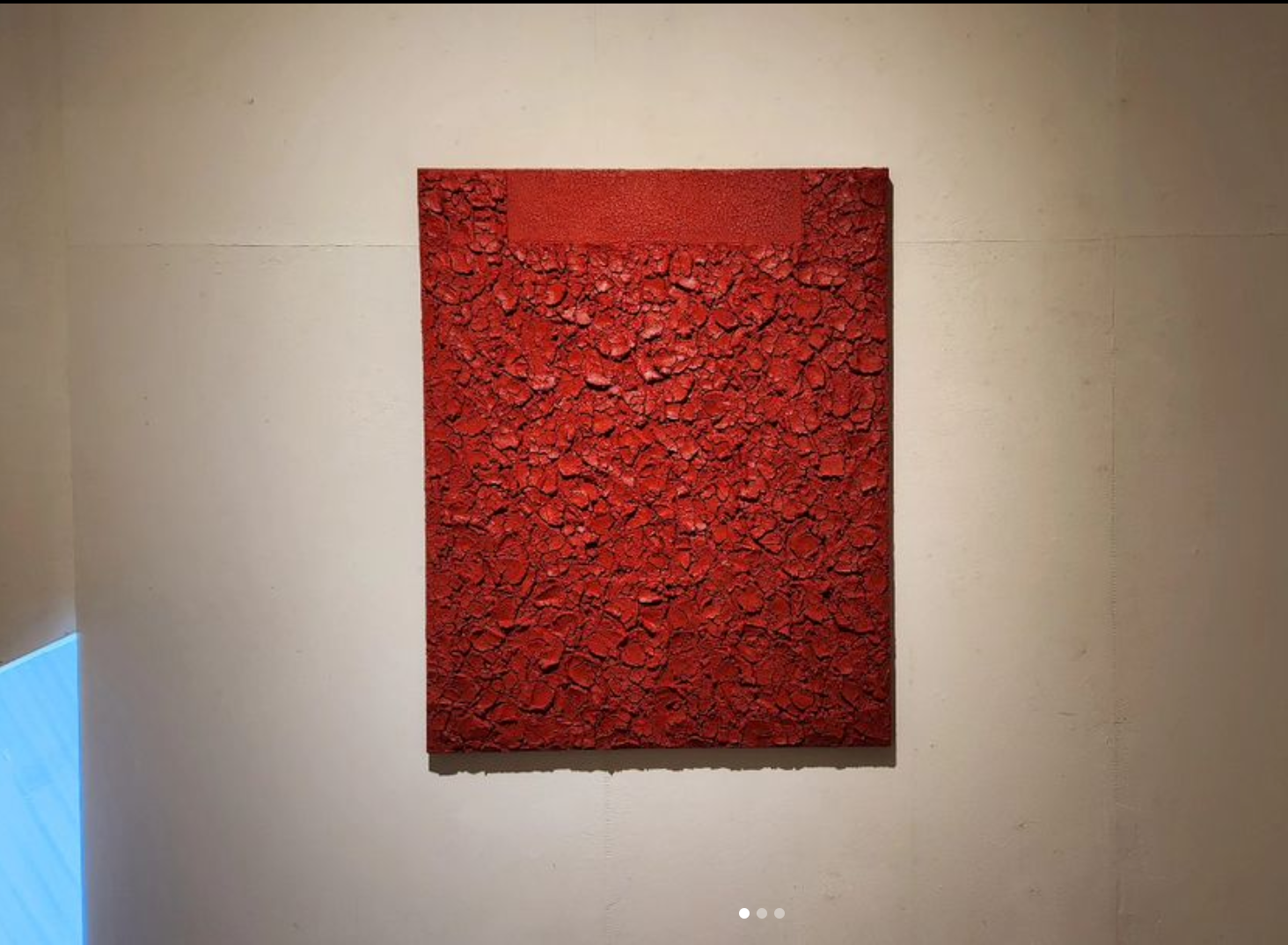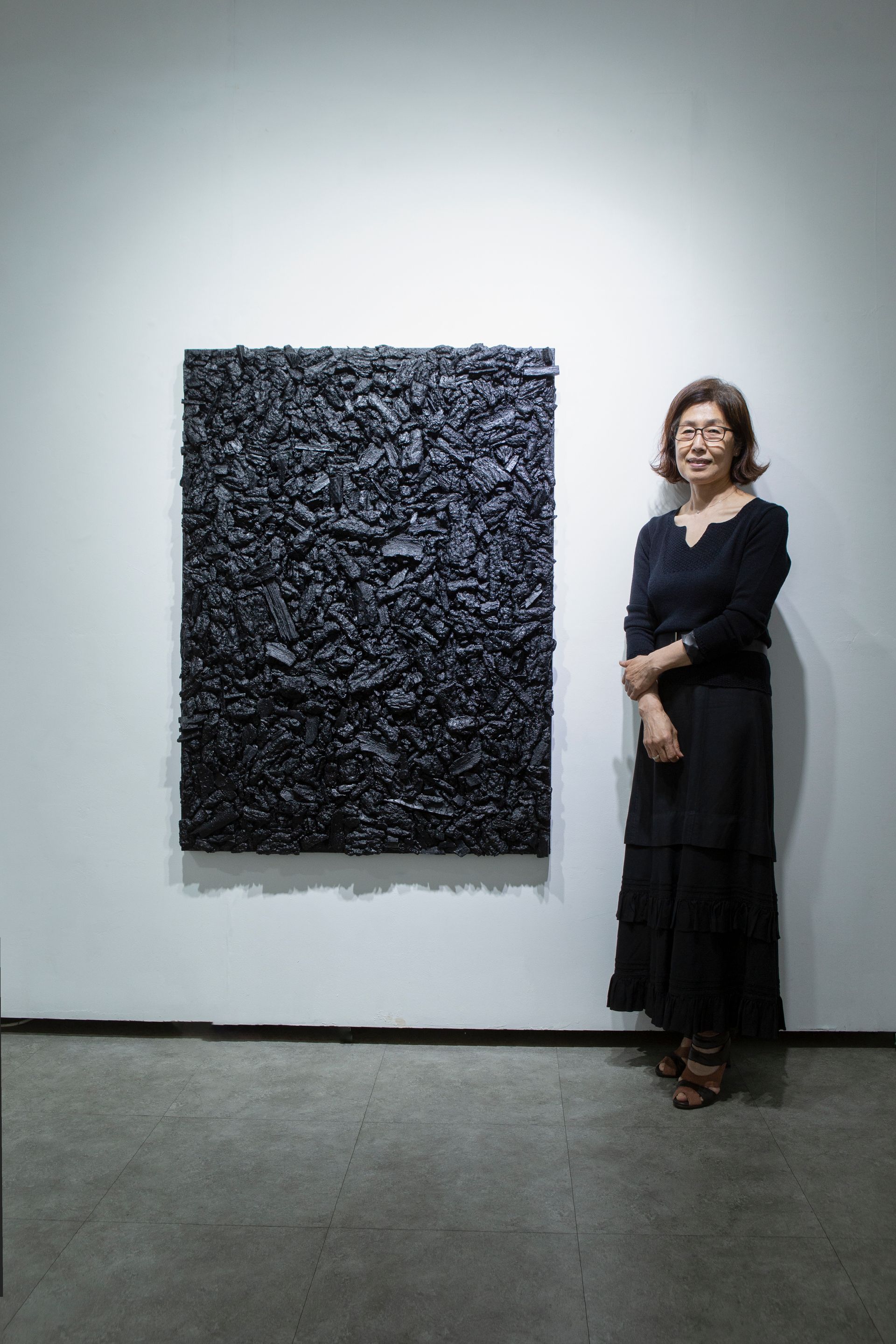Kim, Young-soo Stella
PROFESSIONAL ARTIST
Graduated from Hongik University of Fine Arts, majoring in painting (MFA)
▶ Solo Exhibitions: 31times (2000~2023)
2023 , Sika Art Museum, Gimpo
2023 ,Gallery Mill Studio Invitation, Seoul
2023 ,Invitation to Sejong Art Gallery (Sejong University), Seoul
2022 , Index Gallery Invitation, Seoul
2021 , Fukuoka Asian Art Museum, Japan
2021 , Gallery Artcelsi invitation, Seoul
2020 , Gallery Artcelsi invitation, Seoul
2019.5~6<Inherent signs> , Hyocheon Gallery Invitation, Healience Seon Village, Hongcheon
2018<Inherent signs> , Gallery 1898, Seoul
2017 , Gallery 1898, Seoul
2015 , Gallery 1898, Seoul
2015 , Hyehwa Art Center invitation, Seoul
2014 ,Wee Gallery, Phoenix Scottsdale, AZ, USA
2014 , Gallery Park Avenue invitation, LA.USA
2014 , Geoje Haegeumgang Museum Yukyung Gallery invitation, Geoje
2014 , VergilAmerica 10th Anniversary invitation, Sea&Sea Gallery, Taejongdae
2014 , Hyehwa Art Center, Seoul
2012 , The K Gallery invitation, Seoul
2002 , Pyunghwa Gallery, Seoul
2000 First solo exhibition, Peace Gallery, Seoul
▶Special booth invitation
2023 , Gyeonggi Ansan International Art Fair Invitation, Ansan Arts Center
2014 , Gyeonggi Ansan International Art Fair Invitation, Ansan Arts Center
2013 , Gyeonggi Ansan International Art Fair Invitation, Ansan Arts Center
2012 , Gusang Exhibition Invitation, Seoul Arts Center Garam Hall, Seoul
2012 , Gyeonggi Ansan International Art Fair Invitation, Ansan Arts Center
2011 Gyeonggi Ansan International Art Fair Invitation, Ansan Arts Center
2010 , Gyeonggi Ansan International Art Fair Invitation, Ansan Arts Center
2009 Gyeonggi Ansan International Art Fair Invitation, Ansan Arts Center
2008 , Gyeonggi Ansan International Art Fair Invitation, Danwon Art Museum
2008 , Invitation to Contemporary Women Artists Association, Insa Art Plaza, Seoul, Korea
2004 , Pyongtaekho Art Hall, Pyeongtaek
2007 , Invitation to Gyeonggi Ansan International Art Fair, Ansan Arts Center, etc.
▶ Group Exhibitions: Over 190 domestic and international
2023 The 8th Korea-Romania Exchange Exhibition, Timisoara Western University Museum, Romania
2022 Commemorating the 60th Anniversary of Diplomatic Relations between Korea and Mexico From Seoul to Merida, Merida Visual Arts Center, Mexico
2022 Yeongwain 6th round, Hehwa Art Center
2022 Art Stella Opening Commemorative Invitational Exhibition, Gimpo
2021 Kite and People 5th Round, Hyehwa Art Center
2020 The 7th Korea Romania Exchange Exhibition (on line)
2020 Gallery Art Celly Planning Addu Dystopia Exhibition
2019 6th Korea-Romania Exchange Exhibition Mokdong Gallery, Boryeong Top Gallery
2019 The 5th ESPRIT NOUVEAU Exhibition of the AIAM (Association International Andre Malraux), Louvre
2019 Contemporary Artists’ Association Regular Exhibition, Yangpyeong County Museum of Art
2019 Gallery Art Cell City Planning Freedom2019 Now& Future, Fukuoka Asian Art Museum
2019 Gallery Art Cell City Planning Freedom2019 Tomorrow Different from Yesterday, Yangpyeong County Museum of Art
2019 Toka Art Planning Mix & Match 4th, Guruji Gallery
2019 4th Exposition ESPRIT NOUVEAU de la AIAM-(Drawing Exchange Exhibition), Louvre
2018 Contemporary Artists’ Association Regular Exhibition, Semiwon
2018 Toka Art Planning Mix & Match 3rd, Guruji Gallery
2018 9th Now & Here (Raphael Sharing Exhibition for Migrant Workers), Raphael Center
2017 Toka Art Planning Mix & Match 2nd, Guruji Gallery
2017 Contemporary Artists Association Regular Exhibition, Yangpyeong County Museum of Art,
2017 Contemporary Art Perspective Exhibition, Gallery GO, Incheon
2016 Toka Art Planning Mix & Match 1st, Guruji Gallery
2016 OPERA PARADISO - Opera stories of 11 people, Hyehwa Art Center planning
2016 Philoprint 29th Exhibition - Korean Contemporary Prints, Korean Cultural Center, LA, USA
2016 Philoprint Homecoming Exhibition and Talent Donation (People Who Open the Light 3 times), Hehwa Art Center, etc.
▶Art Fairs
2023 LA Art Show, USA
2021 1st Ulsan International Art Fair, UECO
2020 Art Gwangju, Kim Dae-jung Convention Center (on line)
2020 BAMA Busan Gallery Art Fair, Bexco
2019 Seoul Art Show, Coex
2019 Art Pusan, Bexco
2019 Harbor Art Fair, Hongkong
2017 Art Gyoengju, Hico, Gyoengju
2016 Healing Arts Festival, Coex, Seoul
2014 Busan International Art Fair, Bexco, Busan
2012 Daegu Art Fair, Exco, Daegu
▶ Collections:
Romania Timisoara Western University, Sejong University, Mill Studio, Busan Port Authority, Busan Cham Food, Catholic Archdiocese of Seoul, Geoje Haegeumgang Museum (Yugyeong Gallery), Ansan City Hall, Cheongsong Apple Museum, and other private collections

Slide title
One day, life will fade away, shattered, and scattered.
Button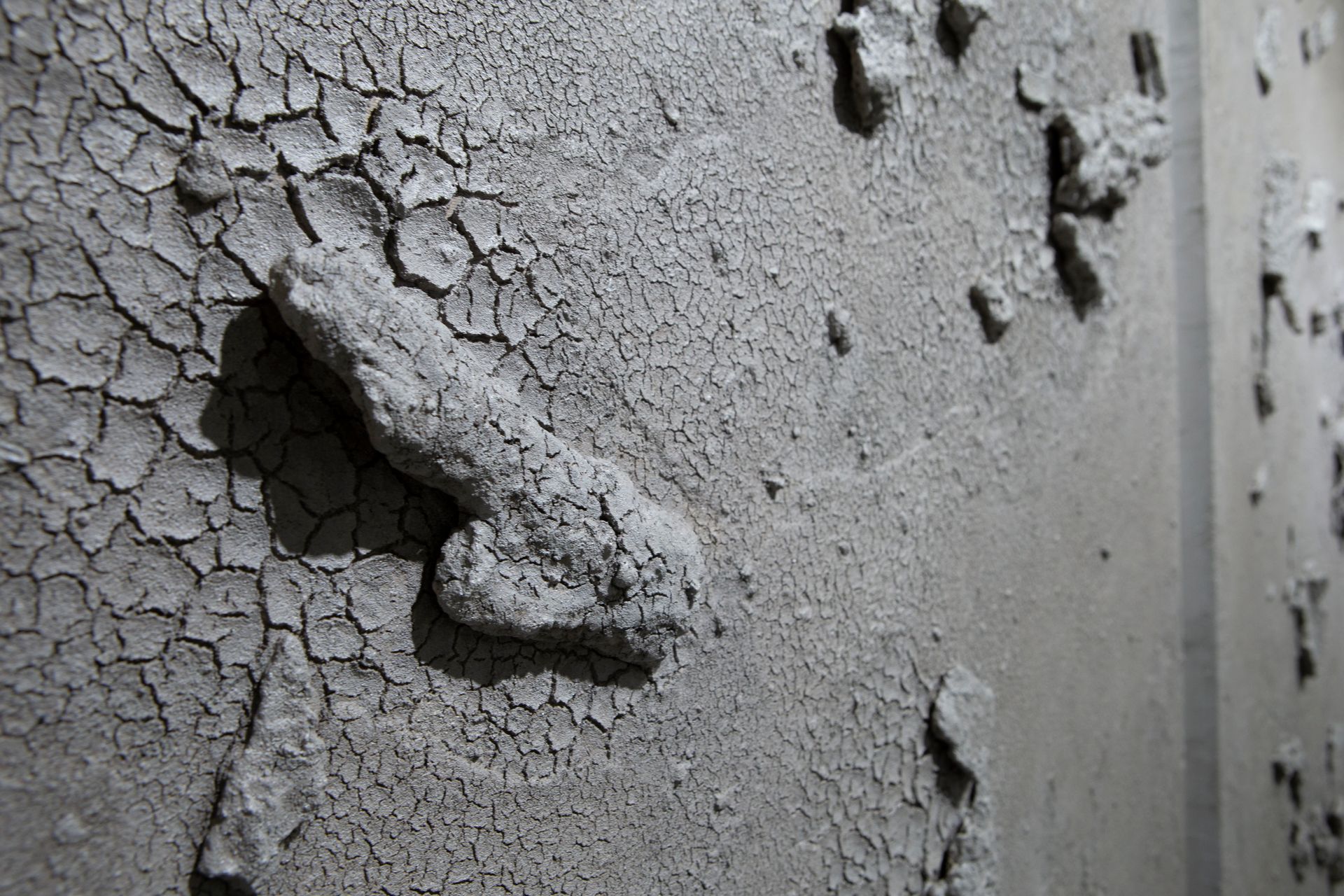
Slide title
Physical characteristics depreciating into carbon masses.
Button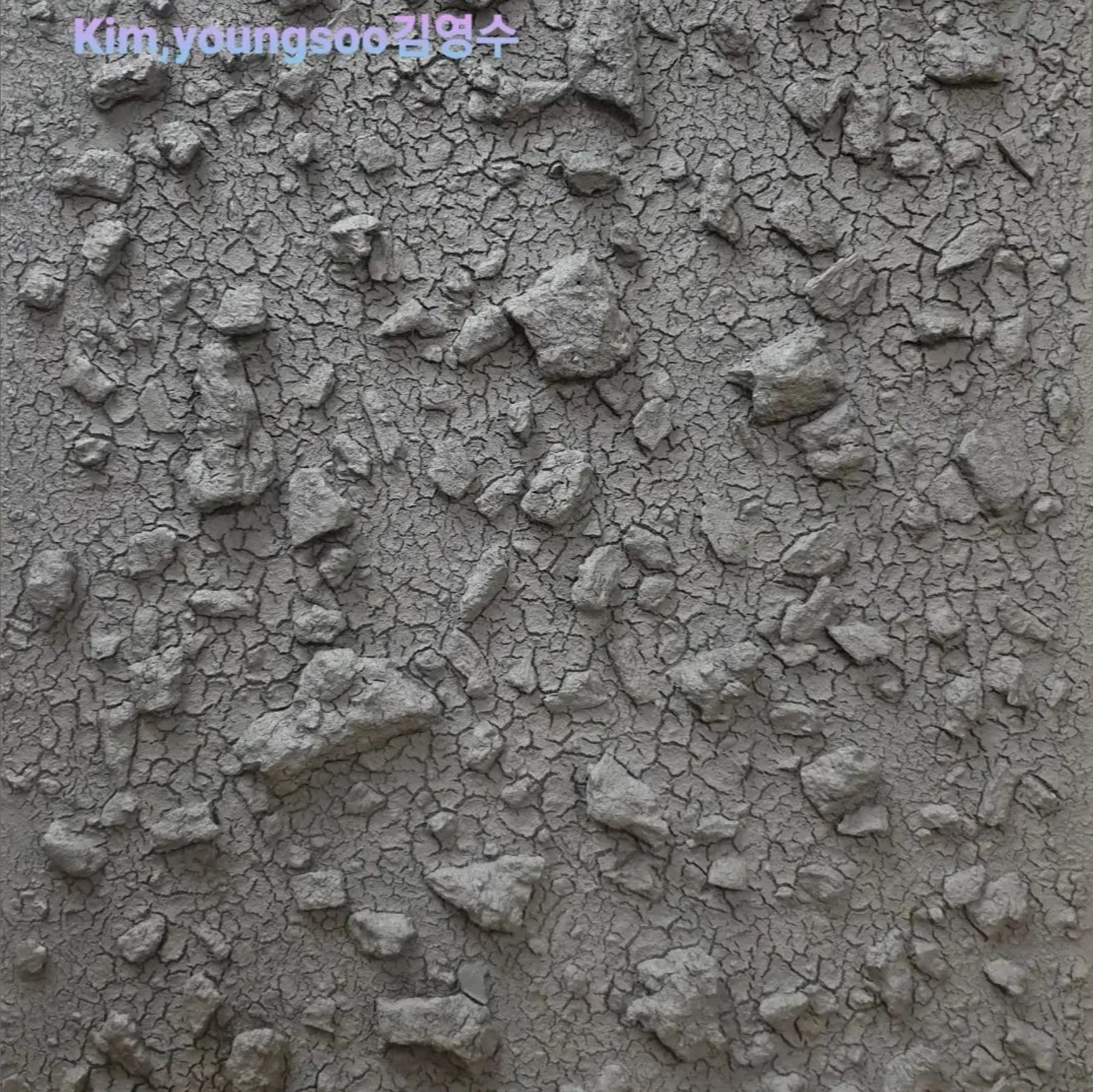
Slide title
Existed across various moments and dimensions...
Button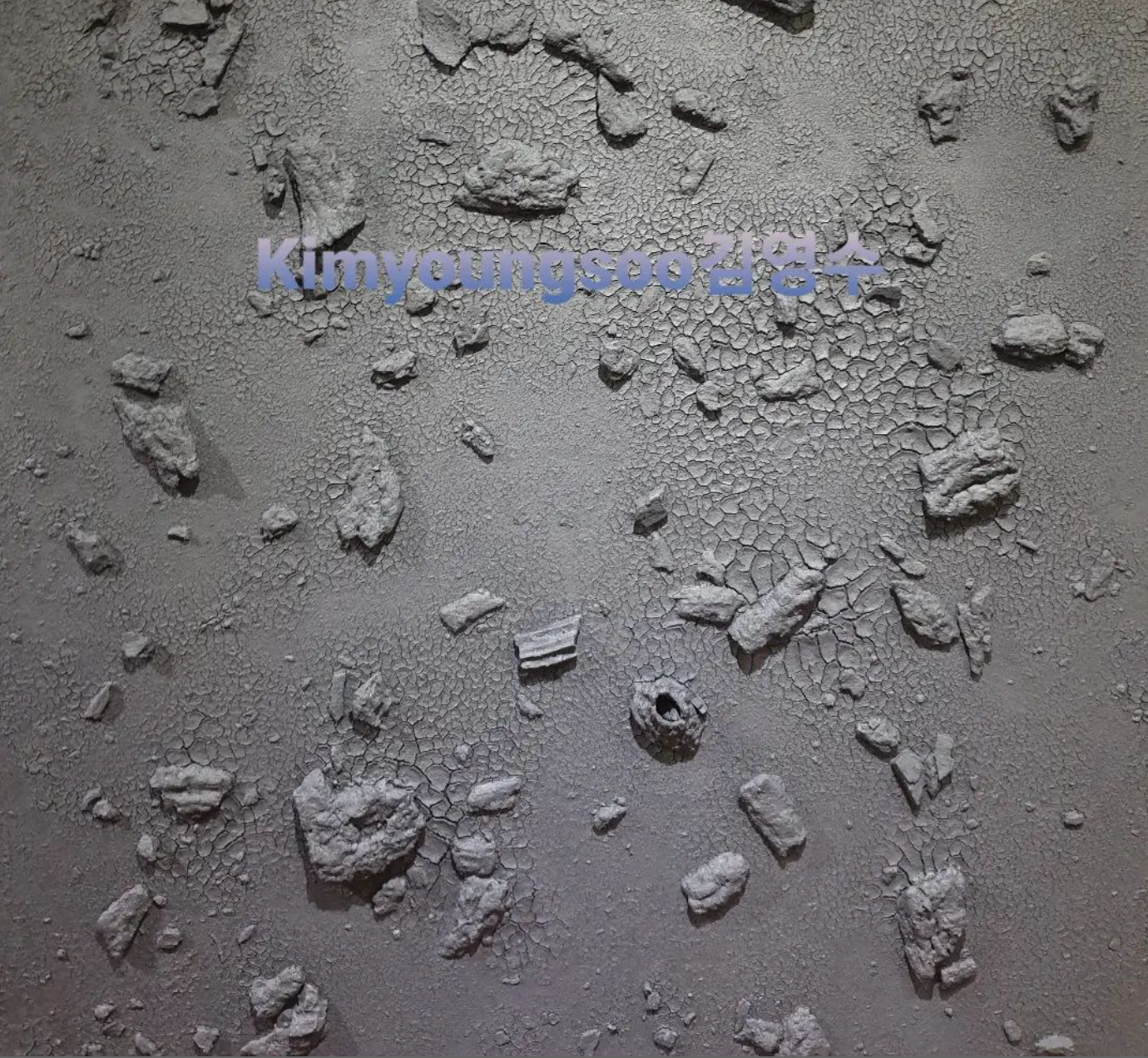
Slide title
Scattered somethings like floating signifiers...
Button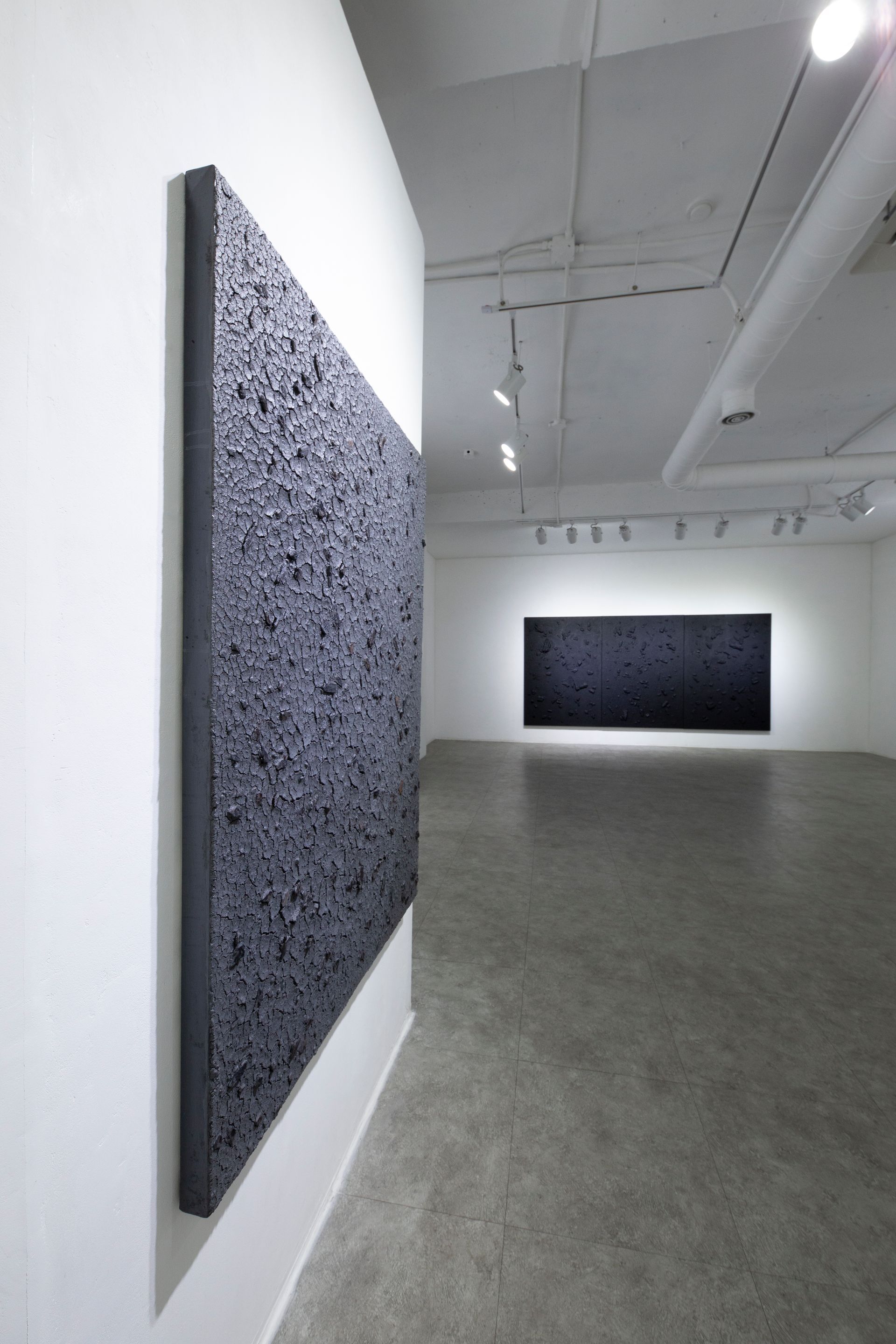
Slide title
Cracks replace the underlying story.
Button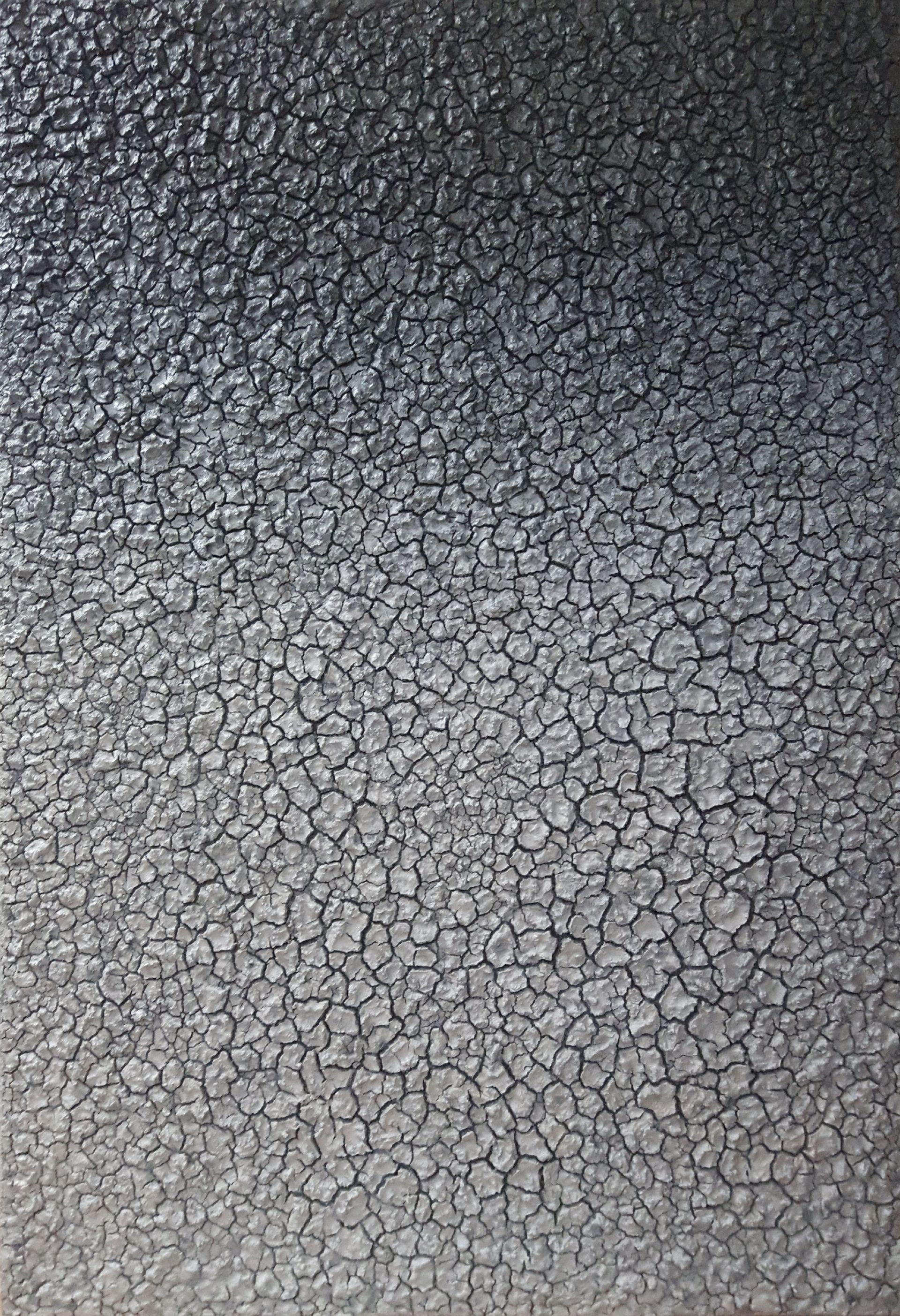
Slide title
All creatures naturally gather on the earth.
Button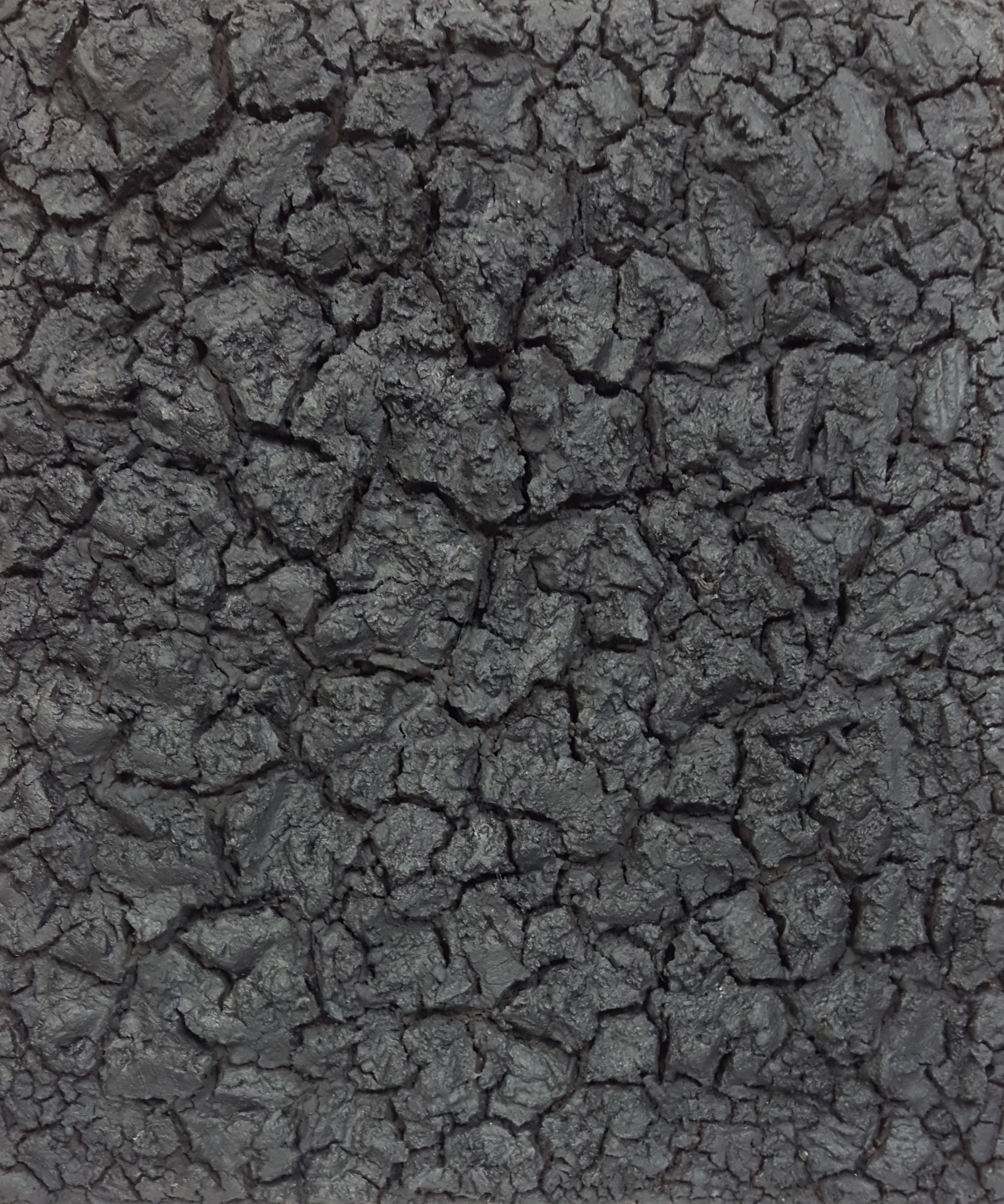
Slide title
Soil is where universal entropy flows through time.
Button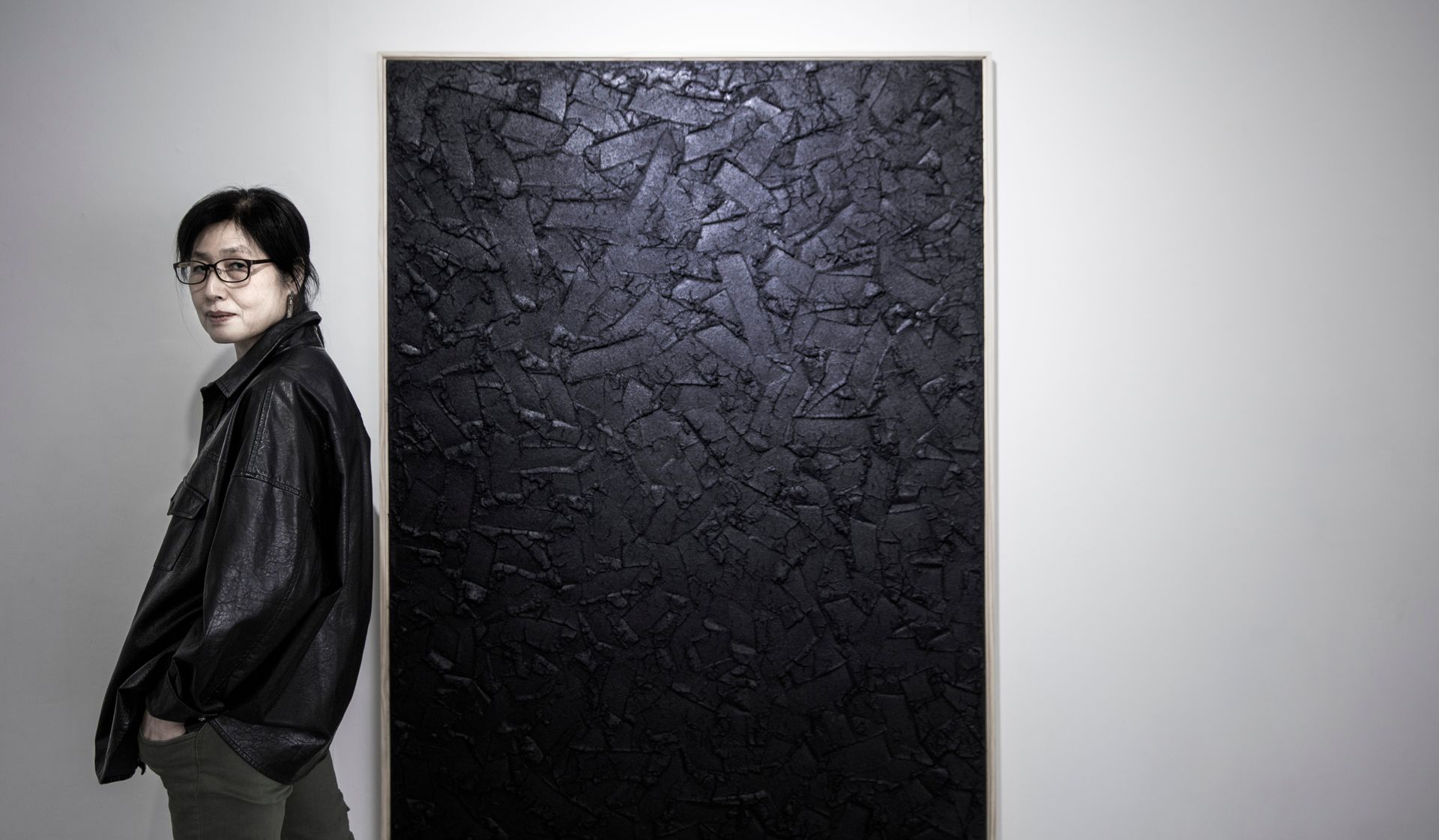
Slide title
Those scattered debris in the field are now my art.
Button
Work notes
Field,
Something scattered
Just as waves crash and vanish, thoughts go unfinished and fade like bubbles, words are stifled and swallowed. Where are the souls born nameless into this world, only to depart without a label? Will the remnants lingering at time's edge scatter, or the forsaken things in the wild be etched in memory as rock-like forms or fleeting shadows? I yearn for these beings, weathered by water and fire like discarded charcoal in a kiln, to one day provide firm ground for another to stand upon.
The soil work <FIELD>, which started in 2017, originated from repentance for the land.
The land is a place where there is no discrimination between wealth and poverty, power and status, good and evil, male and female, human and animal, and it is a field where everything is stripped away. The earth is a holy sanctuary where the beginning and end of existence coexist, a place where the embryonic and death of life takes place by purifying itself.
As the soil made by mixing paint, binder, and charcoal powder dries on the canvas, symbolic cracks are created. Crack is a form in which meanings and metaphors inferred through images are excluded, and the entire screen induces a neutral and simple order system through material identity and repetition.
<Something Scattered>, the second series of <Field>, uses a mixture of soil, charcoal, and burned tree bark. The cracks in the soil that cover the entire background are interlines of the inherent language, and fragments of charcoal are scattered like floating signifiers. Those crumbs are beings that come from different times and spaces and are scattered somewhere again.
<Fragments>, the third series of <Field>, is a collection of fragments of charcoal on canvas. A piece of charcoal is a trace of the past when someone existed and lived on this land. It is also the final result of all things that return to the earth. You and I, our lives will finally be burned, broken, and scattered. Therefore, there is no reason to step on anything just because it is under your feet. The scattered things may have already been me in the past and will also be us and me in the future..
Prior to and following ‘Inherent Symbol’
Kim, Sung-Ho, art critic
I. Introduction
The recent body of work by artist Kim Young-soo delves into the concept of 'intrinsic symbols' within the realm of painting. This exploration can be viewed as a culmination of numerous creative experiments that began with her first solo exhibition in 2000, evolved from a surrealist painting style, and transitioned into an investigation of symbolic forms within abstract painting since 2017. Furthermore, in 2018, during the development of the 'Field' series, which aims to create a visual impact of voids on the canvas, Kim expanded her thematic exploration of relational dialogues encompassing 'human-unconsciousness-desire'. This article delves into her recent works, analyzing the evolution of her artistic style, discussing her consistent thematic exploration, and delving into the significance of her latest creations.
II. Life Performance: A Metaphor for Self-Exploration
Kim Young-soo's artistic journey, as evidenced by her solo exhibitions, can be understood through a central theme: self-exploration. Examining her solo works from 2004's "Sympathy" to 2017's "Inherent Signs" (excluding the most recent series), reveals a recurring exploration of the human condition, particularly focusing on "human-unconscious-desire."
Her 2014 artist's note for "Adagio in Sonata" titled "Playing with Love – Slowly" explicitly confirms this. Kim Young-soo states she's been "investigating the human form since 2000," specifically exploring themes of "emotional empathy, compassion derived from life experiences – femininity, nudity, war, relationships – the unconscious mind, and philosophy of life." These underlying thoughts, according to the artist, are "expressions of the joys and sorrows repressed within the unconscious." In essence, her work reflects a process of self-reflection, where unconscious desires rise to the surface of consciousness.
This introspective journey is further emphasized by her 2008 series "Life is like playing instrument." The title itself suggests a metaphor for life – a performance requiring skill, effort, and influenced by both external experiences and internal motivations. These experiences, Kim Young-soo suggests, shape our "inherent unconscious motivations," ultimately reflected in her paintings. She describes them as a product of both the conscious act of creation and the influence of the subconscious. "In the end," she states, "I'm not painting music, I'm painting myself."
Kim Young-soo's own words, mentioning "life, performance, external experience, internal motivation, inherent unconsciousness, painting, me in the act of drawing, unconscious me, not drawing music, but drawing me," solidify the performative nature of her work. It's a continuous exploration of the human experience through the lens of performance, ultimately leading to a profound self-reflection.
However, her artistic statement goes beyond that. Kim Young-soo asserts, "Finding my ultimate self is the pursuit of freedom, so for me painting is freedom, and freedom is the person 'I'." This clarifies that the "Life Performance" series isn't just a thematic exploration; it serves as a powerful metaphor for her entire artistic journey.
The seemingly material aspect of "music performance" becomes a mere "means and method" to explore the deeper themes of "desire and love," the fundamental motifs in Kim Young-soo's work. The ultimate purpose, as she reveals, is to achieve "self-love." She states, "The most basic motifs in my paintings are desire and love. This is because living is constant self-love, and its basis comes from desire. Each person's life is music played in their own way, and this music contains the emotions of every moment of life."
Therefore, the human body depicted with instruments like the cello becomes a metaphor for human desire and love. "Playing (an instrument)" becomes a way to discover this love. But how exactly does this concept of "desire and love" function in her work. Kim Young-soo defines it as "summoning repressed and latent object representations in the unconscious." We'll delve deeper into this concept in the next section, focusing on her recent "Inherent Symbols" series.
III. Inherent Symbols: Unconscious Whispers on the Canvas
Kim Young-soo's latest series, "Inherent Symbols," presents a captivating enigma. Black lines resembling ancient hieroglyphs dance across abstract expressionist backgrounds, interwoven with washes of paint and occasional fragments of text. These texts, in English or Korean, appear collaged or etched – some decipherable, others deliberately obscured. Their purpose isn't to convey a clear message, but rather to function as "images of non-readability."
This approach resonates with Ferdinand de Saussure's concept of the "image acoustique," the non-verbal counterpart to the spoken word (parole). Similar to how her earlier works visualized musical performances through visual metaphors, these fragmented texts represent a "chain of sound images" (chaîne acoustique). However, meaning arises from the relationship between signifier (the symbol) and signified (the concept it represents). As Saussure famously stated, "the two are always together, like the two sides of a sheet of paper."
In Kim Young-soo's work, brimming with signifiers but lacking a clear signified, where does meaning reside? Here, Freudian psychoanalysis offers valuable insights. For Freud, consciousness operates in the realm of language, while the unconscious thrives on symbols. Kim Young-soo's paintings disrupt this clear-cut division. By prioritizing the signifier over the signified, she compels viewers to engage with the work on a subconscious level.
This strategy aligns with Freud's distinction between "language formation" (formation du mot) and "object formation" (formation de l'objet). Just as Freud viewed the unconscious as a realm of "object formation," Kim Young-soo's emphasis on the "unreadable/meaningless" text suggests a world where signifiers take center stage. These texts function as individualized expressions (parole) emerging from the artist's unconscious, rather than conforming to the structured language (langue) of society.
Essentially, Kim Young-soo's "Inherent Symbols" are not pronouncements from a fully conscious mind, but rather whispers from the unconscious, lingering on the threshold of awareness. Her 2010 artist's note reinforces this concept: "a painting is the result of the 'me in action' and the 'me in unconsciousness' at the moment of drawing," or "the joys and sorrows latent in the human unconscious lead to pathos through a work of art." Similarly, her 2018 statement "I bring out" suggests a deliberate effort to evoke the unconscious in her work.
The artist's own childhood experiences – frequent moves and limited social interaction – serve as a source of inspiration, prompting her to explore the repressed desires and instincts residing within the unconscious. We will delve deeper into these experiences and their influence in the next section.
The architecturally structured lines of Franz Kline instilled courage within me as a prominent artist, while the seemingly nonsensical words resembling scribbles by Christopher Wool and Mel Bochner served as a catalyst to awaken my suppressed desire to communicate. Encountering this primal instinct buried deep within the unconscious mind was like discovering a latent desire. This instinct evolved into an opportunity to create 'Signs,' representing 'words that I wish to convey personally,' essentially transforming my innermost thoughts into expressions on a two-dimensional canvas. (Author's Note, 2018)
Kim Young-soo's paintings blur the lines between conscious and unconscious expression. Inspired by the unconventional – Franz Kline's abstract calligraphy, the fragmented texts of Wool and Bochner, and the raw energy of Abstract Expressionism – she creates a visual language that delves into the depths of the psyche. Her canvases are a confluence of abstract expressionist colors, bold black "text-not-text," and fragmented monologues that whisper like suppressed desires.
These elements resonate with Sigmund Freud's concept of instincts. Existing on the "borderline between mind and body," instincts themselves remain outside the realm of both conscious and unconscious thought. We can only grasp them through "representations representing instinct," which are essentially unconscious mental images or ideas ("object representations"). However, the barrier of repression often prevents these object representations from translating into clear, conscious thoughts ("linguistic representations").
This is where Kim Young-soo's "legitimate summons" comes into play. It's more than mere artistic inspiration; it's a deliberate act of unearthing the unconscious. Her art transcends the limitations of conventional language ("langue"). Instead, it functions as a conduit, actively summoning these repressed object representations.
The "inherent symbols" in her work – a fusion of "sound image" and "parole" (individualized expression) – embody these unearthed desires. They resist being confined by language, existing as "parol signs" – signifiers disconnected from a clear signified. Think of them as fragments of a forgotten dream, evocative yet elusive.
This approach aligns with Immanuel Kant's notion of the "sublime." When confronted with the vastness or power of something beyond our comprehension, we experience a sense of awe and overwhelming emotion. Similarly, Kim Young-soo's art confronts viewers with the unfathomable depths of the unconscious, a realm stained by subjective experiences.
By breathing life into these suppressed representations, Kim Young-soo doesn't just resist language; she actively summons them. Her art becomes a space where the unconscious can be acknowledged and explored on its own terms. This "legitimate summons" is a powerful tool for artistic expression, self-discovery, and inviting viewers to confront the mysteries within themselves.
IV. Crack - a memory trace or a structural creation within the unconscious
The artist Kim Young-soo extends the 'Inherent Symbols' series, initiated around 2017 and carried on until 2008, introducing new works that delve deeper into the subject matter while taking on a completely distinct form. This series, titled ‘Field’, focuses on cracks. A crack can signify a “break created by shattering something” or a “narrow gap.” Deliberately, the artist achieved the cracking effect by chemically mixing pigments and medium on the canvas.
In her artwork, the presence of "cracks" is purposeful as she meticulously examines cross-shaped or elongated rectangular surfaces with various background hues or varying crack intensities individually within the composition. This deliberate approach results in an exaggerated depiction of cracks, giving them the appearance of accidental marks. This technique aims to evoke a sense of serendipity rooted in an inevitable outcome. Balancing between inevitability and chance, action and inaction, and intentional design and randomness, her paintings branch out into numerous directions, forming myriad crevices and folds reminiscent of a parched rice field or the weathered skin of an elderly person.
Is it the rupture and disintegration or the birth of another creation? When does it shatter and when does it come into being? Through these inquiries, we come to understand that her art mirrors a series of occurrences that perpetually transpire on the boundary between consciousness and the subconscious. According to Freud, her fractures represent 'memory traces (traces mnésiques)' residing in the subconscious as voids, interruptions, ruptures, and errors diverging from the continuum of consciousness. In essence, following a Freudian perspective, the fractures in her art are non-verbal 'sound images' that lack the structure of language, or object representations continually formed in the subconscious that fail to manifest as linguistic constructs in consciousness.
Yet, what prompts the artist to create pieces that markedly depart from their previous creations, characterized by expressive screens and calligraphic abstractions infused with Freudian libido and pathos? This latest work diverges from their prior paintings, unveiling a fresh monochromatic style. What unique message does this new painting endeavor to convey?
We must transcend Freud's teachings and examine these fractures through the perspective of his follower Lacan. In contrast to Freud's portrayal of the unconscious as a realm untouched by language within consciousness, Lacan envisions it as a realm structured akin to language. Essentially, whereas Freud perceives the unconscious as a domain governed by 'non-verbal signs,' Lacan regards it as a realm governed by 'structural language' as well. Freud regards the unconscious as an aftermath post-ontological in nature, resulting from the repression of instincts and impulses within the subject. Meanwhile, Lacan posits the unconscious as pre-ontological, a domain of signifiers shaped by social customs, norms, and linguistic systems (symbolic order) that predate the subject's existence, with ideology already ingrained in the subject's psyche.
If Kim Young-soo's 'Immanent Symbol' series, delving into the unconscious realm through a Freudian lens, probes the depths of emotion, the new 'Crack' series contemplates as though navigating the structured unconscious world through Lacan's framework. It is important to note that, unlike Saussure's perspective which considers the fusion of signifier and signified, emphasizing the latter, Lacan shows indifference towards the fusion itself and places greater emphasis on the signifier. In essence, according to Lacan, the unconscious functions as a structured 'language (a signifier).' Thus, just as Lacan's conception of the unconscious is not veiled, dormant, or enigmatic, Youngsoo Kim's 'Crack' is not a suppressed potential distortion but a 'structural creation' manifested through disassembly and restructuring.
Lacan's 'concept of the subject as the other' offers valuable insights into understanding Kim Young-soo's 'Crack' series. Lacan suggests that humans struggle to fully articulate themselves, leading to inherent contradictions as they express themselves. This perpetual discord between the 'speaking I' and the 'spoken I' is a result of the constraints of language. As a consequence, the subject becomes detached and the ego becomes estranged. In response, individuals seek to alleviate the discomfort of self-conflict, acknowledge self-alienation, and identify with the signifier representing the subject. Lacan proposes that an absolute existence beyond language, known as the discourse of the Other, is necessary to address this dilemma. Human unconsciousness is shaped by the words and discourse of the Other, and individuals yearn for this discourse to fill the voids and gaps within themselves. Our humanity is defined by our adherence to the symbolic order, the language hierarchy, and the discourse structure.
Lacan's concept of the subject involves being 'divided', 'split', or, as he put it, a 'shaded' entity existing between 'the self as the other' and 'the unconscious as the discourse of the other'. At this stage, the Lacanian subject is not an active ego but rather an 'ego fixated on and narcissistically attached' due to the presence of 'false images' within the ego.
Kim Young-soo's crack is used as a metaphor for the 'division of the subject and distorted images' arising from Lacan's discourse on the Other. Consequently, what may seem like a contemplative swim in the structured realm of the unconscious actually depicts a human subject meandering amidst fractures and crevices. It is essential to note that Kim Young-soo's crack is an ongoing project that has not yet been unveiled, making these comparisons and analyses speculative at this point.
V. Expressive Language
Artist Kim Young-soo's creative vision traverses a spectrum of surrealistic explorations into human existence, portraying people as the central focus. His work delves into the depths of unconscious emotions, capturing the interplay between joy and sorrow through the motif of musicians engaged in their craft. Furthermore, he delves into the realm of latent desires residing in the subconscious, with 'intrinsic symbols' guiding his compositions. Through a continuous process of experimentation and evolution, he has crafted pieces that blend elements of abstract expressionism with calligraphic abstractions, offering a visual representation of the world around us. Noteworthy transformations can be observed in the ongoing development of his Crack series. Beyond the scope of this article lies his 'print works,' a vast and diverse collection that showcases the artist's unwavering commitment to exploring a myriad of artistic variations.
However, as the recurring themes of unconsciousness, humanity, existence, self, and passion have been steadfast throughout, it is evident that the focus for forthcoming works lies more on internal transformations rather than external alterations. I am fully aware of the audacity and futility in deconstructing artworks that convey messages through nonverbal means, steering viewers into an analytical framework. Yet, I earnestly wish that this critique, though daring on the author's part, sparks contemplation in writer Kim Young-soo for future creations and stands as a beacon amidst numerous commentaries, guiding readers towards a truly enriching literary experience.
New ParagraphBefore and after Kim Young-soo’s ‘Inherent Symbol’




